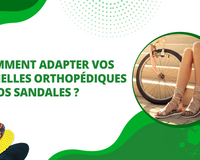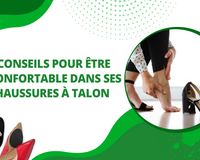A normal foot is slightly arched and is most often referred to as a cambered foot, although people with this type of foot generally face a hunchbacked tarsus. As soon as this curvature becomes too pronounced, we speak of a hollow foot. In most cases, pain in the hollow of the foot is the consequence of a neurological disease.
It's crucial to get consult if you notice that your plantar arch becomes hollow. Medical follow-up will help relieve the pain in the hollow of the foot if a neurological hollowfoot disease is noted.
Wearing shoes for sunken feet and orthopedic insoles for sunken feet are medical devices that can also contribute to the relief of sore feet. reduce pain in the hollow of the foot.
How to recognize sunken feet?
Unlike flat feet, which are characterized by a sinking the arch of the foot, the hollow foot is characterized by excessive curvature of the arch. This foot deformity can have consequences such as claw toes and heel misalignment.
Unlike the very common "equinus varus hollow foot", valgus hollow foot is a rare form of this pathology.
Hollowfoot pain: Who are the victims of hollowfoot?

Hollowfoot is a neurological condition that affects people with foot pain. adults adults children. Adult neurological hollow foot is generally accompanied by hollow foot pain and foot nerves in the metatarsal or heel joints.
Treatment should be sought as soon as possible to avoid complications. Hollowfoot in children, on the other hand, usually presents no symptoms.
Hollow feet: other possible causes
Neurological disease is not always the cause of hollowfoot pathology. Hollows in the arch of the foot can have other causes, too:
- prolonged immobilization of the foot
- Excessive wear of certain nerves in the feet
- Rheumatoid arthritis or inflammation of certain foot joints
- Foot trauma
- Hypertrophy of the foot
However, idiopathic hollowfoot is foot that has no real cause. Like neurological hollow feet, hollow foot insoles and hollow foot shoes can help relieve idiopathic hollow foot pain.
Hollow foot with a neurological cause: what you need to know
Hollowfoot pathology can lead to diseases of the nerves in the feet. Nerves in the foot are one of the consequences of sunken feet, which often have a neurological origin.
Neurological hollow foot: what it is
Hollow feet are caused by a number of factors of neuromuscular, congenital and even developmental origin. Hollow feet, however, are most frequently caused by neurological factors These are known as neurological hollow feet. You should therefore consult a neurologist if you notice that your foot is excessively sunken.
Hollow feet can be the cause of certain neurological pathologies, including :
- Poliomyelitis,
- congenital spina bifida,
- Stroke sequence,
- Charcot-Marie-Tooth disease,
Diagnosis of neurological hollow foot
Podiatrists diagnose hollow foot simply by foot X-ray. In order to determine the origin of the plantar arch deformity, the doctor may perform a examination if a neurological cause is suspected. The result of the diagnosis determines which treatment to follow.
However, wearing hollow-foot insoles and hollow-foot shoes remains an effective treatment to relieve the pain of the inner arch of the foot. Massaging the arch of the foot also correctly relaxes the foot's muscles, joints and nerves.
In addition, surgery is recommended for those with significant and severe neurological deformities of the hollow foot.
Hollow foot and back pain

Unlike normal feet, sunken feet generally cause back pain. back pain. Because the anatomy of the foot is deformed, the foot receives unbearable pressure in the heel, forefoot and ankle. With the foot tendon out of alignment, pain can be felt in the lower back or even the hips.
A burning toe sensation due to arthrosis of the metatarsal heads can also occur.









